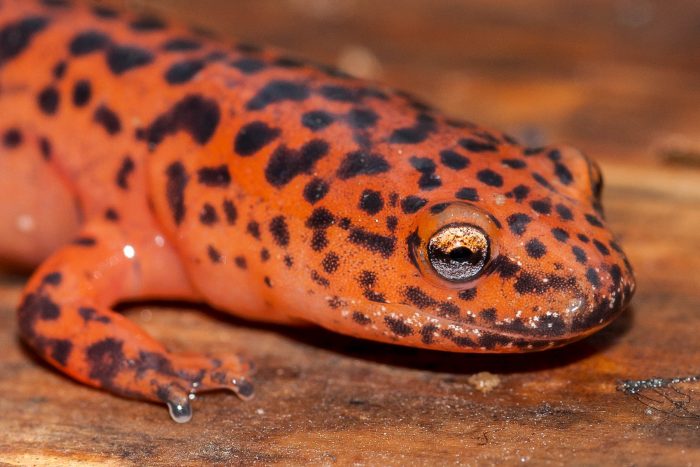Northern Red Salamander
Pseudotriton ruber ruber
The northern red salamander is a small, reddish amphibian with black, irregularly shaped spots covering its back. It lives in cool freshwater streams and adjacent wooded areas throughout most of the Chesapeake Bay watershed.

